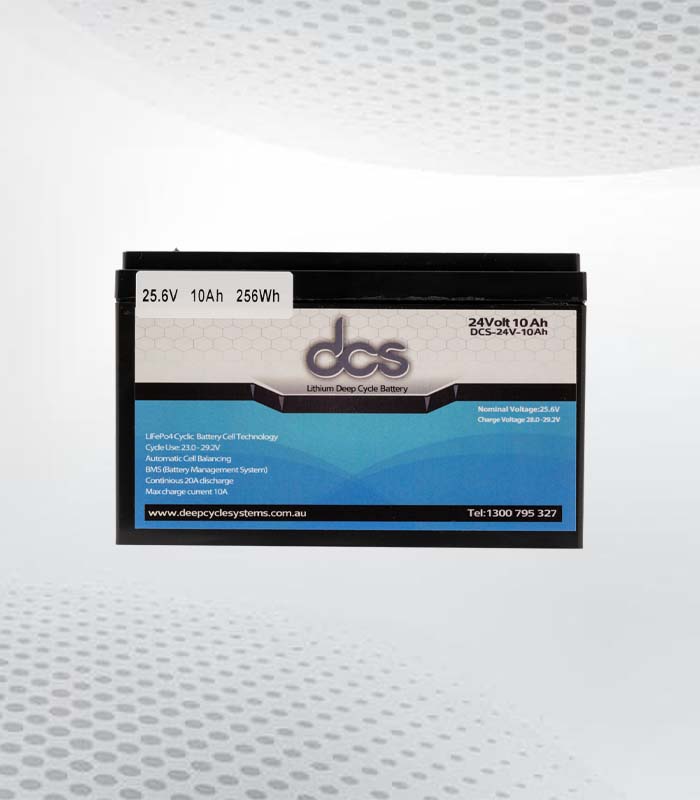
Understanding the basics of Lithium ion Batteries is crucial for proper maintenance. These batteries store and release energy through chemical reactions influenced by various factors. Temperature plays a significant role; high temperatures can speed up degradation, while cold conditions may temporarily reduce capacity.
Charge cycles, which use 100% of the Lithium Battery capacity, also affect longevity. For instance, using 50% today and 50% tomorrow is one cycle. Discharge rates, or how quickly energy is used, can impact the battery’s lifespan. Familiarising yourself with these elements is essential for extending your lithium battery’s lifespan.
Best Charging Methods for Lithium ion Batteries
How you charge your battery can greatly impact its longevity. Aim to maintain a charge between 20% and 80% to prevent excessive strain on the battery cells. Avoid leaving your device plugged in for extended periods, especially once fully charged. A balanced charging routine will help keep your battery in optimal condition.
Fast charging should be avoided unless necessary, as high current can generate heat and reduce battery life. Always use the charger the manufacturer provides or one that meets the device’s specifications to ensure proper charging and maintain battery health.
Charging cycles and their impact on battery lifespan
The number of charge cycles a lithium ion battery can handle typically ranges from 300 to 500. A charge cycle is defined using 100% of the battery’s capacity, which doesn’t necessarily have to happen simultaneously.
For example, using 50% of the battery’s charge one day and another 50% the next day equates to one full cycle. Minimising the number of full cycles can help extend the battery’s overall lifespan. Charging the battery before it fully depletes is advisable to avoid unnecessary strain.
Best charging practices to extend lithium ion battery life
To extend the life of your lithium ion battery, ensure you follow a balanced charging routine. Aim to keep the charge level between 20% and 80%, avoiding the extremes that can strain the battery cells. Fast charging should be reserved for situations where it’s necessary, as it generates heat and can degrade the battery more quickly.
Charging the battery before it fully depletes is also advisable, reducing unnecessary stress. Always use the manufacturer’s charger or one that meets the device’s specifications to maintain optimal charging conditions. These habits are crucial for sustaining the battery’s health.
Preserving Ideal Conditions for Lithium Batteries Storage
Proper storage is crucial for maintaining the longevity and efficiency of Lithium ion Batteries. By following specific guidelines, you can ensure your batteries remain in optimal condition for long-term use.
Optimal Temperature and Humidity
When storing Lithium Batteries, always choose a cool, dry location. Extreme heat or exposure to direct sunlight can cause the battery to degrade faster, reducing its performance and lifespan. Aim for a moderate temperature range and avoid storing in areas with fluctuating temperatures or high humidity levels, as moisture can cause internal damage to the battery.
Charge Level Maintenance
To preserve the battery’s chemical integrity, store it at approximately 50% charge. This helps balance the internal components and prevents stress that could shorten the battery’s life. Avoid fully discharging or charging the battery to its maximum, as both extremes can negatively impact its longevity.
Protection against Physical Damage
Ensure the storage area is free of sharp objects or heavy items that could cause physical damage to the battery. Using a proper storage case designed for Lithium ion Batteries adds an extra layer of protection from environmental factors like dust, moisture, and accidental impacts.
By taking these precautions, you can maximise your Lithium ion Batteries’ storage life and performance, ensuring they are ready for use when needed.
Temperature control for lithium ion battery longevity
Temperature control is vital for maintaining the longevity of Lithium ion Batteries. High temperatures can cause the battery to degrade faster, reducing its lifespan. Conversely, extremely cold conditions can temporarily diminish the battery’s capacity, affecting its performance. It’s advisable to use and store your lithium ion battery in environments with temperatures between 10°C and 30°C.
Avoid placing the battery in direct sunlight or near heat sources, as this can lead to overheating and potential damage. For devices with built-in cooling systems, ensure these function properly to help regulate the temperature. If storing the battery for an extended period, keep it in a cool place to prevent any adverse effects caused by fluctuating temperatures.
Humidity and its effects on lithium ion battery performance
High humidity levels can lead to condensation within Lithium ion Batteries, causing potential internal short circuits or corrosion over time. When moisture accumulates inside the battery, it can adversely affect its performance and safety. It is advisable to store devices in environments where humidity is controlled, ideally within 30% to 50%. Ensuring proper sealing of battery compartments can also help mitigate the risks associated with high humidity.
Consider using protective cases or pouches designed to reduce moisture exposure for electronic devices in varying climates. Regular inspection of your storage area for signs of dampness or leaks can prevent potential issues before they arise. By managing humidity levels effectively, you safeguard the internal components of your lithium ion battery from unwanted damage.
Understanding the Capabilities of 12 V Lithium ion Batteries
12 V Lithium ion Batteries are favoured for their high energy density and extended cycle life. They are used in diverse applications, such as recreational vehicles, solar power systems, and backup power supplies. Unlike lead-acid batteries, 12 V Lithium ion Batteries are lighter and more efficient, making them a preferred choice for modern energy solutions.
It is important to regularly monitor their voltage levels, ensuring they remain within the safe operating range of 11V to 14.6V. A Battery Management System (BMS) can also help optimise performance by preventing over-discharge and overcharge. Understanding these capabilities allows you to make the most of your 12V lithium ion battery.
Understanding voltage ratings for safe usage
Voltage ratings are crucial for safely and efficiently using 12 V Lithium ion Batteries. These batteries typically operate best within a range of 11V to 14.6V. Staying within this range helps maintain optimal performance and prevent damage. Monitoring the battery’s voltage can alert you to potential issues before they cause harm.
When a lithium ion battery operates outside its ideal voltage range, its internal components may suffer, reducing lifespan and efficiency. Employing a Battery Management System (BMS) can aid in keeping the voltage levels in check, preventing over- and under-voltage situations. Ensuring your battery stays within the recommended voltage parameters is essential for maintaining its health and functionality.
Adopting Proper Usage Patterns for Longevity
Establishing proper usage patterns can make a significant difference in the lifespan of your lithium ion battery. Avoid completely discharging your battery frequently, as this stresses the cells unnecessarily. Charging the battery around 20-30% can help maintain its longevity. Using a Battery Management System (BMS) is also beneficial, as it can manage and optimise the usage patterns, preventing the battery from undergoing excessive strain.
Modern Lithium ion Batteries incorporate advanced materials and improved electrolytes, making them more resilient to daily usage when managed correctly. Also, please avoid using the battery in environments with extreme temperatures, which can also impact its lifespan. Keeping your battery within its ideal operational conditions helps ensure that it remains efficient over time.
Consistent usage habits to enhance battery durability
Establishing consistent usage habits plays a critical role in enhancing the durability of your lithium ion battery. Regular use and periodic charging are essential in stabilising the battery’s chemical balance, preventing the cells from undergoing excessive stress.
Charging your battery when it reaches around 20-30% rather than letting it deplete completely is recommended. This practice helps to maintain the battery’s health and extend its operational life. A Battery Management System (BMS) is advantageous, as it monitors and optimises charging and discharging processes, ensuring the battery is used within its optimal parameters.
Avoid exposing your lithium ion battery to extreme temperatures during use. High temperatures can cause accelerated degradation, while cold conditions temporarily reduce capacity and performance. It’s crucial to use and store the battery within the recommended temperature range to maintain efficiency.
Additionally, modern Lithium ion Batteries incorporate advanced materials and improved electrolytes, making them more resilient to daily usage when managed correctly. However, these advancements do not eliminate the need for careful handling. Avoiding high discharge rates can also extend battery life, as rapid depletion generates heat and strains the cells. Implementing gentle usage patterns, such as moderate discharge rates and avoiding complete depletion, supports long-term durability.
Staying informed about the latest trends and developments in lithium ion battery technology can help you adapt your usage habits to maximise efficiency. Innovations in battery design, such as improved electrolytes and anode materials, are continually making Lithium ion Batteries more robust and reliable. By adopting consistent and thoughtful usage patterns, you ensure that your lithium ion battery remains durable and efficient over an extended period, providing reliable performance for your devices.
Tips to prevent over-discharge in 12 V Lithium ion Batteries
When it comes to maintaining the health of your 12V Lithium ion Batteries, monitoring voltage levels is crucial to prevent over-discharge and ensure optimal performance. Regularly checking the battery’s voltage can catch potential issues early, preventing costly damage and extending the battery’s lifespan.
Use a Battery Management System (BMS)
A Battery Management System (BMS) is an essential tool for managing the voltage of Lithium ion Batteries. It provides real-time monitoring and can automatically disconnect the battery if the voltage falls too low, protecting it from over-discharge. This ensures the battery remains in good health for longer periods.
Set Alarms and Notifications
Setting alarms or notifications on your devices can alert you when the battery voltage is approaching a critical level. This proactive measure helps you act before the battery is drained, preventing further strain on the system.
Ensure Device Compatibility
Not all devices are designed to work with 12V Lithium ion Batteries; using incompatible equipment can lead to over-discharge. Ensure your devices have built-in low-voltage protection to safeguard the battery. Choosing equipment designed for Lithium ion Batteries can avoid unintentional over-discharge and maintain the battery’s efficiency.
By following these best practices, you can effectively manage your 12V lithium ion battery, ensuring it performs well and lasts longer.
Conclusion
Lithium-cranking batteries are a breakthrough in automotive technology, especially for cold-weather performance. Their high energy density, low internal resistance, and efficient discharge rates ensure reliable starts even in freezing temperatures. Coupled with advanced thermal management systems, these Lithium Battery provides unmatched reliability in harsh winter conditions. In addition to superior performance, they offer longer lifespans, minimal maintenance, and environmental benefits over traditional lead-acid batteries. As a result, lithium-cranking batteries are cost-effective and eco-friendly, making them the ideal choice for modern vehicles in cold climates.
FAQ
How do Lithium Battery perform in cold weather?
Lithium Battery is designed to perform exceptionally well in cold weather. Their high energy density allows them to retain power in freezing temperatures, providing quick and reliable engine starts. Unlike lead-acid batteries, which can lose control in low temperatures, Lithium ion Batteries maintain their efficiency even in harsh winter conditions.
Are lithium cranking batteries safe?
Lithium-cranking batteries have numerous safety features, including overcharge protection, short-circuit prevention, and thermal management systems. These features ensure the battery operates safely by preventing overheating and other potential hazards, making them safer than traditional lead-acid batteries.
How long do lithium-starting batteries last in cold climates?
Lithium starting batteries have a longer lifespan than lead-acid batteries, especially in cold climates. Their stable chemical composition and resistance to issues like sulphation ensure they remain reliable over extended periods, even in freezing temperatures.
Can I install a lithium-cranking battery myself?
Yes, lithium-cranking batteries can be installed by following proper installation guidelines. It is important to ensure the battery is compatible with your vehicle and to follow safety protocols, such as disconnecting the negative terminal and cleaning battery connections.
Do Lithium ion Batteries require maintenance?
Lithium ion Batteries require minimal maintenance. Regmaximisecks on battery connections and maintaining a full charge during inactivity are recommended to maximise their lifespan and efficiency. This simple upkeep ensures the battery remains in top condition throughout its service life.
| Related Business Listings |
| Contact Directory |
| Local Business Profiles |





